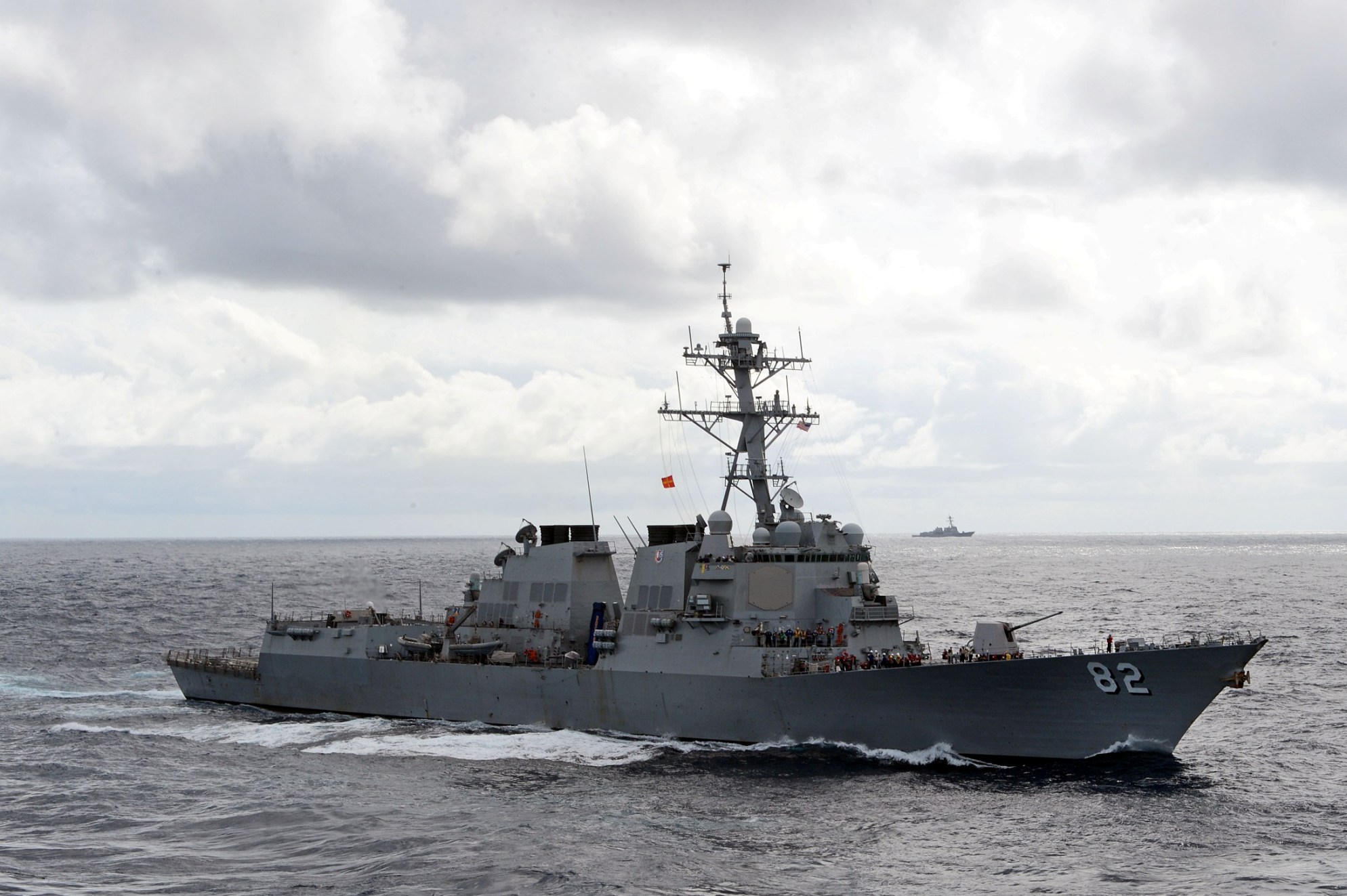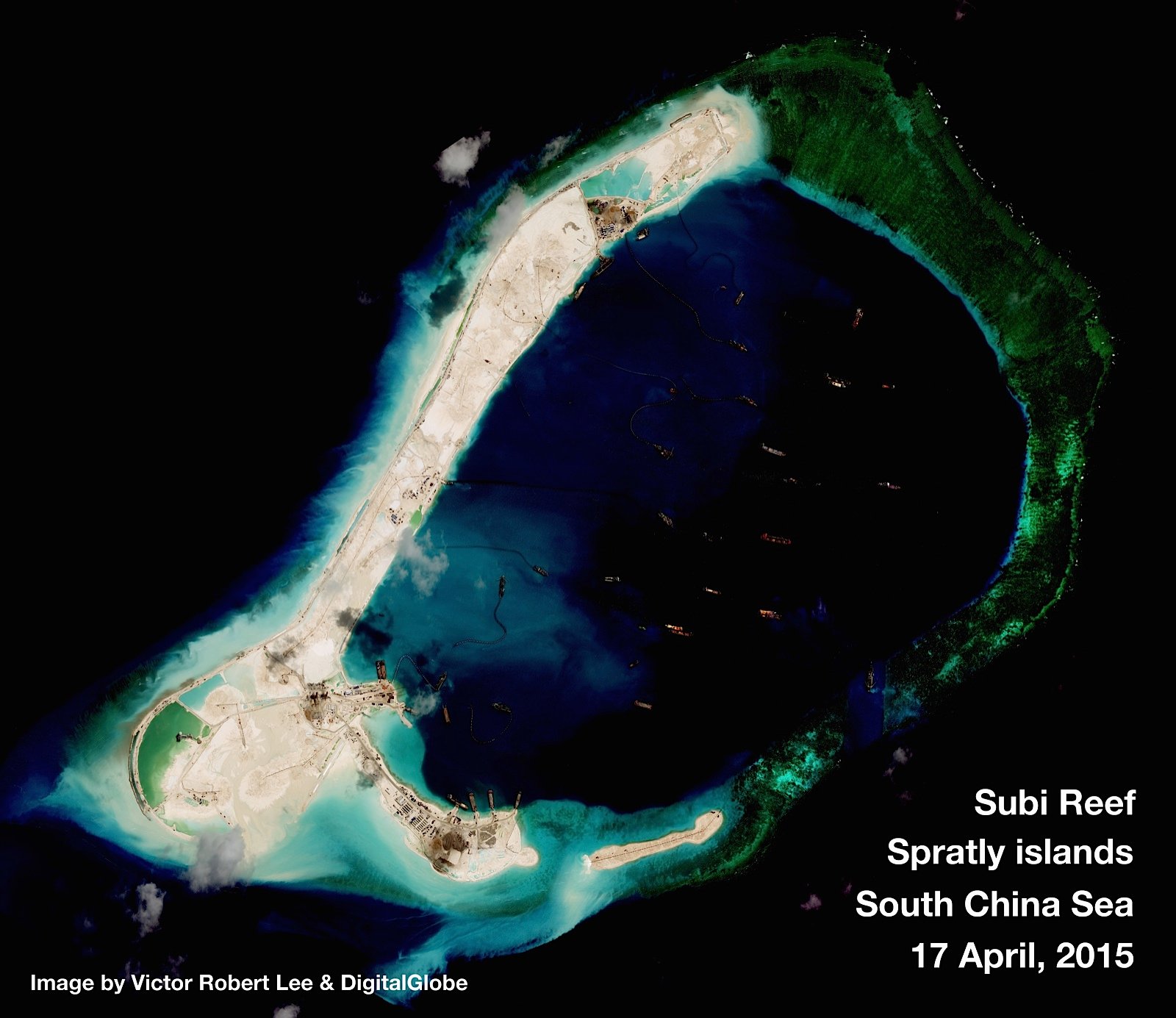
Last week’s South China Sea freedom of navigation mission — in which a U.S. guided missile destroyer came within 12 nautical miles of a Chinese facility on an artificial island on Subi Reef — was conducted as an “innocent passage,” a defense official with knowledge of the operation confirmed to USNI News on Monday morning.
While the mission of USS Lassen (DDG-82) was deemed successful by Washington, focusing world attention on the myriad of overlapping and disputed claims in the South China Sea, the use of the innocent passage stipulation could result in a perception that the U.S. implicitly acknowledges Chinese claims to its recently constructed artificial islands.
Under international maritime law, a warship is allowed to make an innocent passage
through any nations territorial waters without prior notification if it does not conduct any military operations in transit — like activating fire control radars, firing weapons, conducting drills or transmitting propaganda.
The U.S. does not recognize any of the expansive territorial claims in the South China Sea’s Spratly Island chain — not only by China but also by Vietnam and the Philippines — and believes its ships are within their rights to come within 12 nautical miles of any of the disputed features without having to honor innocent passage rules.
Lassen’s innocent passage was meant by no means a U.S. recognition of any of China’s territorial claims based on their artificial islands, a defense official told USNI News on Monday.
However, the ramification of even implicit territorial recognition of any of the features could kick off a spate of enforcement by nations bordering the South China Sea in an attempt to claim exclusive national rights of navigation and overflight and economic controls over what is now recognized as international territory, according to maritime law experts.
“Given the proliferation of claims over the hundreds of rocks, reefs, skerries and cays in the South China Sea, if the international community recognizes the maximum theoretical rights generated by each of them, the oceans and airspace will come to look like Swiss cheese and be practically closed off to free navigation and overflight,” wrote James Kraska, professor in the Stockton Center for the Study of International Law at the Naval War College in September.

The decision for Lassen to transit via innocent passage by Subi Reef was made by the White House from a menu of freedom of navigation missions presented by Pentagon and U.S. Pacific Command officials, several sources confirmed to USNI News on Monday.
While the particulars of Lassen’s freedom of navigation mission were designed to create a minimum amount of stir in China, Beijing’s intense reaction to the passage — innocent or not — made international headlines.
Not only did China accuse the U.S. of meddling in its internal affairs, but the military and the Ministry of Foreign Affairs also promised a commensurate response to the U.S. operation.
“Relevant actions by the U.S. naval vessel threatened China’s sovereignty and security interests, put the personnel and facilities on the islands and reefs at risk and endangered regional peace and stability. The Chinese side hereby expresses strong dissatisfaction and opposition,” read a statement last week from Foreign Ministry Spokesperson Lu Kang.
“We will keep a close eye on what is happening in the relevant waters and airspace and take all necessary measures as needed.”
In addition, regional U.S. allies like Australia have committed to more South China Sea freedom of navigation actions following Lassen’s lead.
While the outcome for the U.S. could reasonably be deemed successful it was preceded by weeks of high-level press leaks and speculation a U.S. South China Sea freedom of navigation mission was in the offing. The White House, according to The New York Times, told the Pentagon to remain silent after the mission.
The only U.S. official to publically acknowledge the mission on the record last week was Secretary of Defense Ash Carter before the Senate Armed Services Committee. Carter acknowledged press reports but provided no additional detail after intense questioning from SASC chair Sen John McCain (R-Ariz.)
“I don’t like in general the idea of commenting on our military operations but I can say but what you read in the newspaper is accurate but I don’t want to say more than that,” Carter said.

Traditionally, the opposite has been the case with freedom of navigation operations (FON op)— officials and the military remain silent about the operation until after it occurs and then after the fact disclose particulars.
Even while breaking with precedent, Washington may have gotten lucky in how it handled the non-traditional lead-up to the operation, Kraska told USNI News on Monday.
“The apparent indecision within the U.S. Government over whether to conduct the mission appeared to undermine U.S. resolve. On the other hand, the weeks of discussion and media speculation attracted greater attention regionally, including eliciting statements of support from Australia, Japan, and the Philippines and others,” he told USNI News on Monday afternoon.
“In the end, the operation was anti-climatic, as it demonstrated that China was unwilling or unable to prevent free use of the South China Sea. The Lassen FON op has been successful, as far as it goes.”
What’s next is if the U.S. will make good on its commitment to continue the freedom of navigation missions in the region, Kraska said.
“International law is built upon state practice over an extended period of time, so a single operation is just one step,” he said.
“To be effective, the United States and other countries will have to maintain a routine presence in the area, and to regularly exercise their right to freedom of navigation and overflight and other internationally lawful uses of the sea.”





